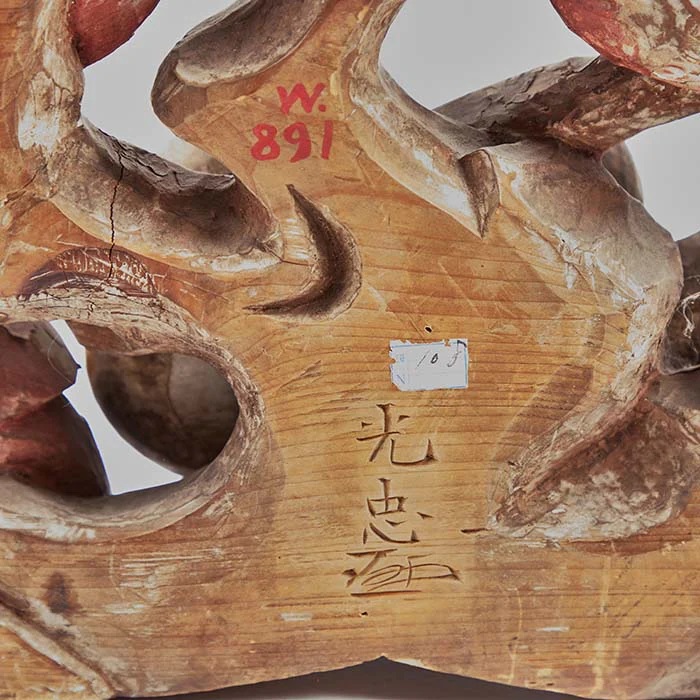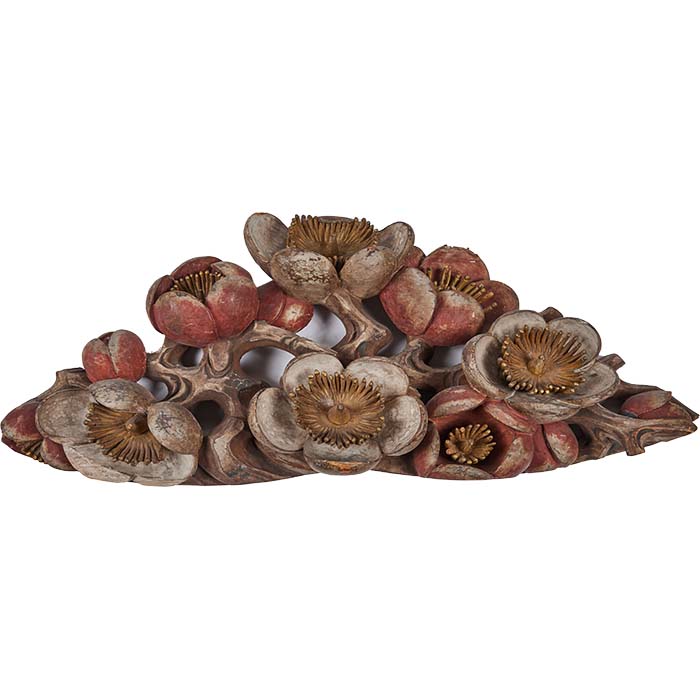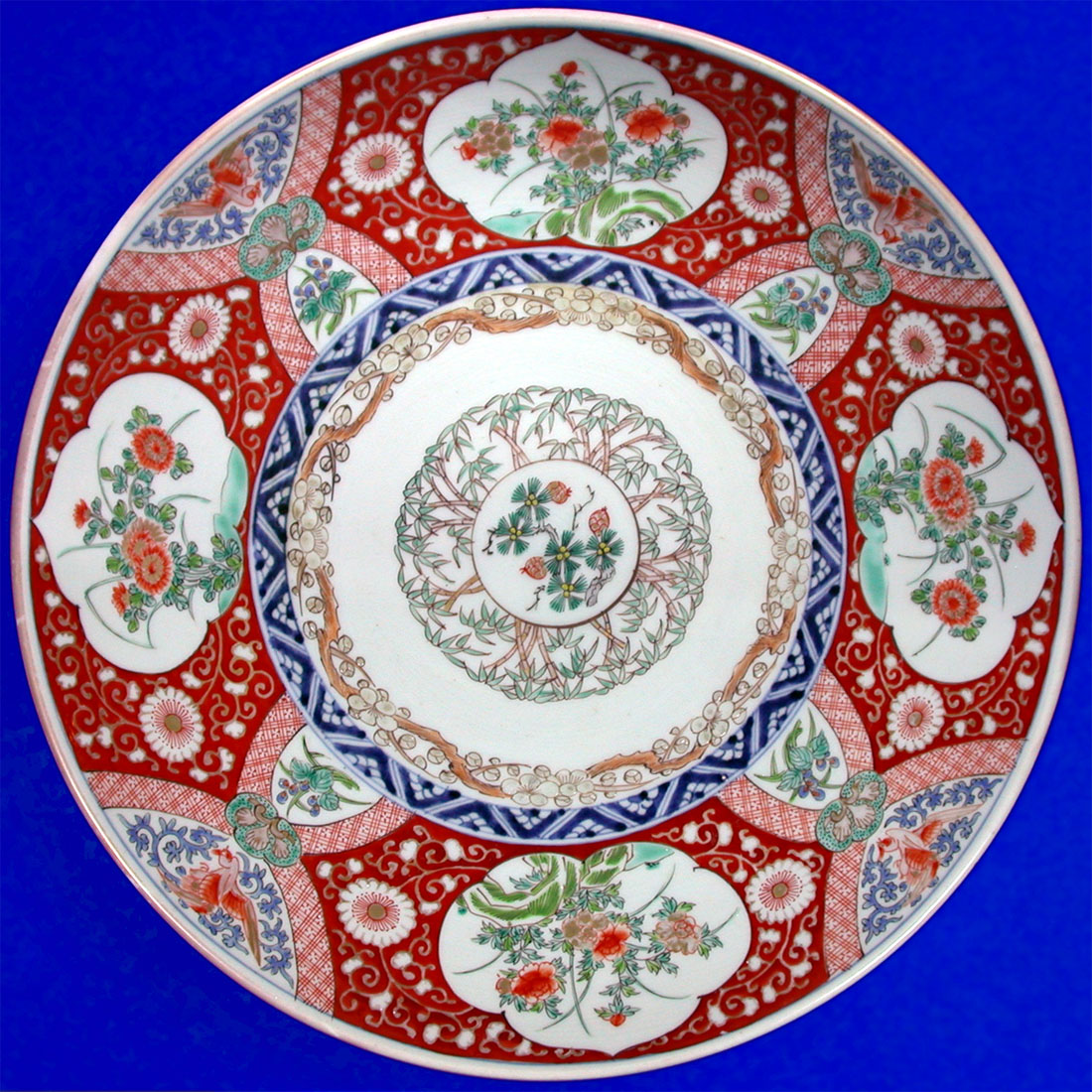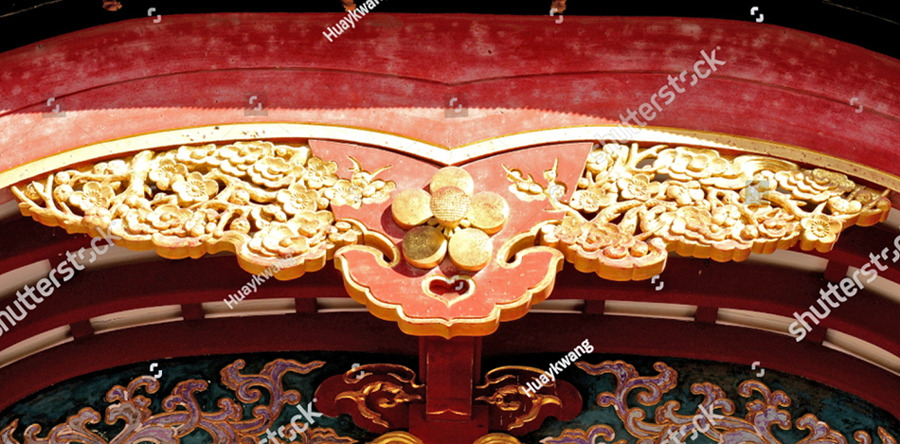
|
Subject:Re: Inscription on temple entrance relief
Posted By: Christopher Wed, Sep 06, 2023
Hello Hans,
Thanks for your interest in this piece. Here are three more photos.
The image of the back shows the undulating profile of the top, which I think would have been attached to a karahafu-type gable above a temple entrance. At the center left and center right, maybe an inch below the top, you can see the dowel holes for pegs that would have secured the tenons that were attached to the gable roof.
The top view shows the rectangular cuttings for the two tenons.
Also, one side view. The other side looks pretty much the same.
Does this make sense to you? If my understanding is right, the strange thing is that the inscription (the first two characters, 光忠, are the name of the carver, Mitsutada) is upside down, as are a couple of later labels: W.891, in red paint, and 108, written on a paper label. And you can see from the D-ring hanger that a previous owner also thought that the double-curved surface was the bottom of the piece. (In that case, it would have functioned more as a kaerumata, but I think that those are always attached to transverse beams and have completely flat bases.)
Thanks for any thoughts or info you might have about this.
Christopher
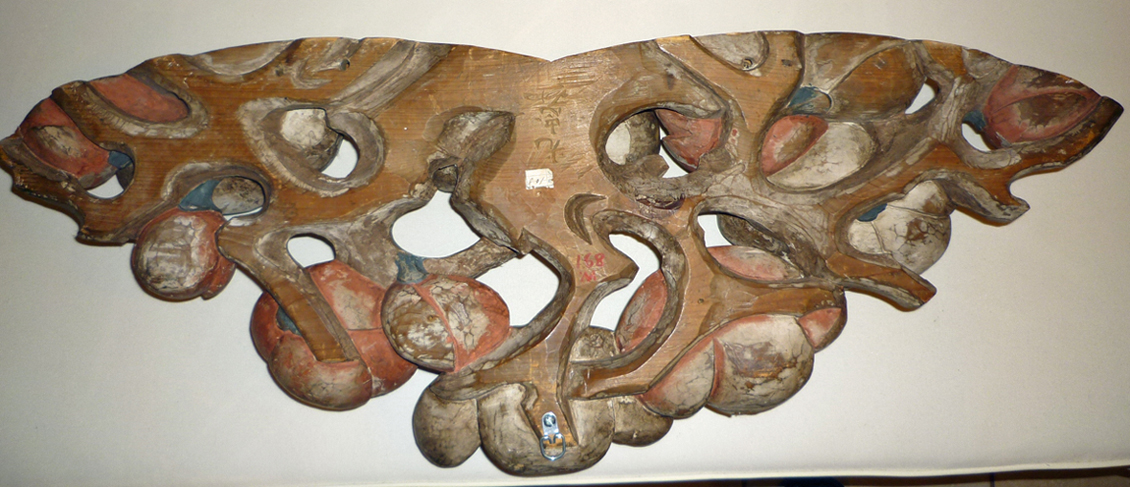




|
 Inscription on temple entrance relief
Inscription on temple entrance relief  ( China & Japan ) - Christopher Moss - Mar 07, 2023 (10:50 AM)
( China & Japan ) - Christopher Moss - Mar 07, 2023 (10:50 AM)  Re: Inscription on temple entrance relief - Jem - Mar 11, 2023 (08:51 PM)
Re: Inscription on temple entrance relief - Jem - Mar 11, 2023 (08:51 PM)  Re: Inscription on temple entrance relief
Re: Inscription on temple entrance relief  - Bill H - Mar 12, 2023 (11:35 AM)
- Bill H - Mar 12, 2023 (11:35 AM)  Re: Inscription on temple entrance relief
Re: Inscription on temple entrance relief  - Christopher - Mar 13, 2023 (11:19 AM)
- Christopher - Mar 13, 2023 (11:19 AM)  Re: Inscription on temple entrance relief - Hans - Aug 07, 2023 (01:53 PM)
Re: Inscription on temple entrance relief - Hans - Aug 07, 2023 (01:53 PM)  Re: Inscription on temple entrance relief
Re: Inscription on temple entrance relief  - Christopher - Sep 06, 2023 (02:10 PM)
- Christopher - Sep 06, 2023 (02:10 PM) 